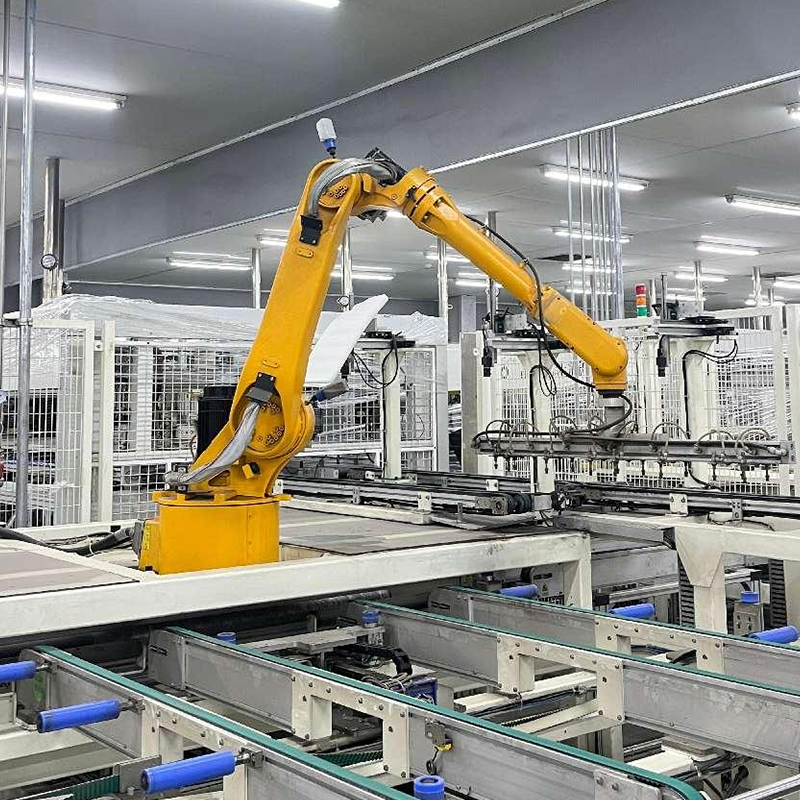- This topic is empty.
-
AuthorPosts
-
30/07/2025 at 14:27 #5821
In the manufacturing sector, particularly within the production of artificial boards, technological advancements have played a pivotal role in enhancing efficiency, quality, and scalability. Among these innovations, the lay-up machine stands out as a cornerstone in the production process of artificial boards such as Medium-Density Fiberboard (MDF), Particleboard, and Oriented Strand Board (OSB). By utilizing advanced control systems and often robotic arms, the lay-up machine minimizes human error and maximizes productivity, thereby enhancing the overall quality and cost-effectiveness of the finished products.

Functional Overview of Lay-Up Machines
1. Core Purpose and Operational Principle
Lay-up machines are designed to automate the assembly of raw materials into layered structures that form the foundation of artificial boards. These machines meticulously arrange chips, strands, or fibers into uniform mats or layers, ensuring consistent density and thickness across the entire board. They operate by conveying raw materials from storage bins onto a moving platform, where precise metering and spreading mechanisms distribute the materials evenly.
2. Components and Technology
Key components include conveyors, feeders, metering rollers, spreaders, and often, integrated glue application systems. Advanced models may incorporate sensors and automated control systems to monitor and adjust material flow, glue application rates, and layer thickness in real-time. This technology ensures precision, minimizing waste and enhancing product uniformity.
Impact on Production Efficiency and Quality
1. Enhanced Productivity
Automated lay-up machines significantly increase production rates compared to manual processes. By streamlining the layer assembly, they reduce labor requirements and cycle times, allowing manufacturers to produce larger volumes with consistent quality. This scalability is crucial in meeting market demands and staying competitive.
2. Improved Board Quality
Uniformity in material distribution is vital for the structural integrity and aesthetic appeal of artificial boards. Lay-up machines ensure consistent layer thickness, density, and bond strength, reducing defects like voids, warping, and delamination. This leads to higher-quality products that meet or exceed industry standards.
3. Cost Savings and Resource Optimization
By minimizing material waste and maximizing raw material utilization, lay-up machines contribute to cost savings. Efficient glue application further reduces material expenses and environmental impact. Additionally, automated processes reduce downtime and maintenance costs, enhancing overall operational efficiency.
Advancements and Future Trends
1. Automation and Integration
The integration of lay-up machines with other automated systems, such as material handling robots and AI-driven quality control, is becoming increasingly common. This interconnectedness optimizes the entire production line, enhancing flexibility and responsiveness to changes in production schedules or product specifications.
2. Smart Sensors and Predictive Maintenance
The incorporation of IoT-enabled sensors allows for real-time monitoring of machine performance and early detection of potential issues. Predictive maintenance, facilitated by data analytics, enables proactive repairs and scheduled downtime, minimizing disruptions and extending equipment lifespan.
3. Sustainable Practices
In line with global efforts towards sustainability, manufacturers are developing lay-up machines that use less energy, produce fewer emissions, and are easier to recycle. Innovations in material handling and waste reduction technologies are also gaining traction, aiming to create a more circular production process.
4. Customization and Flexibility
As consumer preferences diversify, the ability to produce customized artificial boards is gaining importance. Lay-up machines are evolving to accommodate a wider range of raw materials, thicknesses, and decorative surfaces, catering to niche markets and personalized demands.
Conclusion
The lay-up machine is an indispensable tool in the production of artificial boards, revolutionizing the industry through enhanced efficiency, improved product quality, and cost savings. With continuous advancements in automation, integration, and sustainability, these machines are poised to play an even more critical role in shaping the future of artificial board manufacturing. As technology evolves, so too will the capabilities of lay-up machines, driving innovation and competitiveness in the sector. The exploration of their key role underscores the importance of embracing technological advancements to meet the evolving needs of the market and contribute positively to environmental sustainability.
http://www.bluemannsolar.com
Wuxi Bluemann -
AuthorPosts
- You must be logged in to reply to this topic.